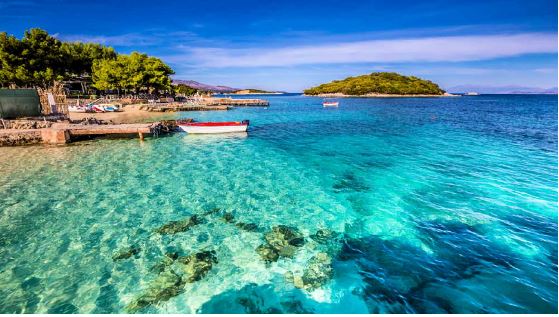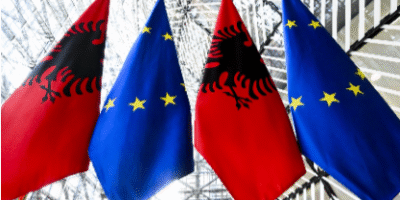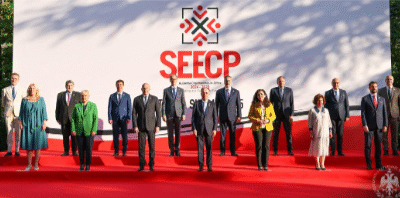In a short span of time, Albania has gone from being a well-kept Mediterranean secret to one of Europe’s fastest-growing tourist magnets. Once cherished for its untouched beaches, rich cultural heritage, and budget-friendly travel options, the country now stands at a crossroads. The exponential rise in visitor numbers – projected to reach an eye-watering 30 million by 2030 – has set alarm bells ringing. Can Albania cash in on this boom without running its natural and social fabric into the ground?
A Meteoric Rise: The Gold Rush of Albanian Tourism
Albania’s tourism sector has witnessed an unprecedented explosion, fuelled by improved infrastructure, a surge in direct flights, and relentless promotion through
social media. What was once an overlooked corner of Europe has now turned into a must-visit hotspot. In 2015, Albania welcomed just over three million international tourists. By 2023, that figure had ballooned to 10 million—a jaw-dropping 56% increase compared to pre-pandemic levels. Budget airlines, such as Ryanair, have played a pivotal role in this rapid expansion, offering low-cost connections that make the country more accessible than ever.
The economic gains are undeniable. Tourism has become a cornerstone of Albania’s GDP, contributing 25% in 2023 alone and generating tens of thousands of jobs. Yet, as history has shown in destinations like Spain’s Costa del Sol or Croatia’s Dubrovnik, unchecked tourism growth can be a double-edged sword. The very elements that make a destination appealing can end up being eroded by the sheer weight of mass tourism.
Ksamil: A Paradise on the Verge of Collapse
If there is one place that encapsulates Albania’s over tourism dilemma, it is Ksamil. Once a sleepy fishing village with postcard-perfect beaches, it has morphed into a chaotic seaside resort, struggling under the strain of its own popularity. The shoreline, once open to all, is now monopolized by an endless row of sunbeds and beach bars, each staking claim to a piece of the sand. Visitors expecting a serene coastal escape find themselves navigating a maze of hastily built hotels, construction sites, and discarded beer bottles along the promenade.
The environmental toll is mounting. Haphazard urban expansion, often with little to no regard for sustainable planning, is leaving its mark. Construction debris has been dumped into the sea, damaging marine ecosystems. Beaches are artificially extended to accommodate more sun loungers, disrupting natural habitats. Water pollution is on the rise, with outdated infrastructure struggling to keep pace with soaring demand.
The Price of Progress: Economic Growth vs. Local Well-Being
From an economic perspective, tourism has been a windfall for Albania. Jobs have been created, local businesses have flourished, and the sector has injected billions into the economy. But as the saying goes, “all that glitters is not gold.” The success story comes with its own set of complications.
A familiar pattern is emerging: as tourist hotspots thrive, local residents find themselves increasingly priced out of their own communities. Skyrocketing property values and soaring rental costs, fuelled by demand for short-term holiday lets, are making it difficult for Albanians to live in coastal towns. The cost of living in Ksamil and Saranda has risen sharply, leaving many struggling to keep up. If left unaddressed, Albania could follow in the footsteps of cities like Barcelona and
Lisbon, where locals are being pushed to the periphery while tourism-driven
businesses monopolize the urban landscape.
The Road to Sustainable Tourism: A Race Against Time
Albania is at a pivotal moment. The government must decide whether to continue riding the wave of unchecked tourism growth or take a more measured approach that safeguards the country’s long-term interests. Experts warn that without immediate intervention, Albania risks sacrificing its natural beauty and cultural authenticity for short-term economic gain.
Key steps must be taken to ensure sustainable tourism. Stricter regulations on construction projects are needed to prevent further environmental degradation. Waste management systems must be improved to cope with the surge in visitors. Investment in renewable energy sources and eco-friendly infrastructure should be prioritized to minimize the sector’s carbon footprint. Additionally, efforts should be made to diversify tourism beyond the peak summer season and encourage travel to inland areas, thereby easing pressure on the coastline.
Prime Minister Edi Rama has championed Albania’s tourism expansion, touting it as a key driver of economic prosperity. However, with the country on the verge of an over tourism crisis, the true test of leadership will be in striking a delicate balance—one that fosters growth without eroding the very essence of what makes Albania unique.
A Make-or-Break Moment for Albania`s Tourism Future
There is no doubt that Albania`s tourism boom is a success story in the making. Its stunning landscapes, rich history, and affordability continue to draw in visitors from across the globe. But if the country fails to rein in the negative consequences of mass tourism, it risks becoming a cautionary tale instead.
The clock is ticking. Will Albania take decisive action to protect its natural and cultural treasures, or will it allow short-sighted policies to turn its coastal gems into yet another example of tourism gone wrong? The answer will define the nation`s future for decades to come.
Written by our correspondent A.T.



